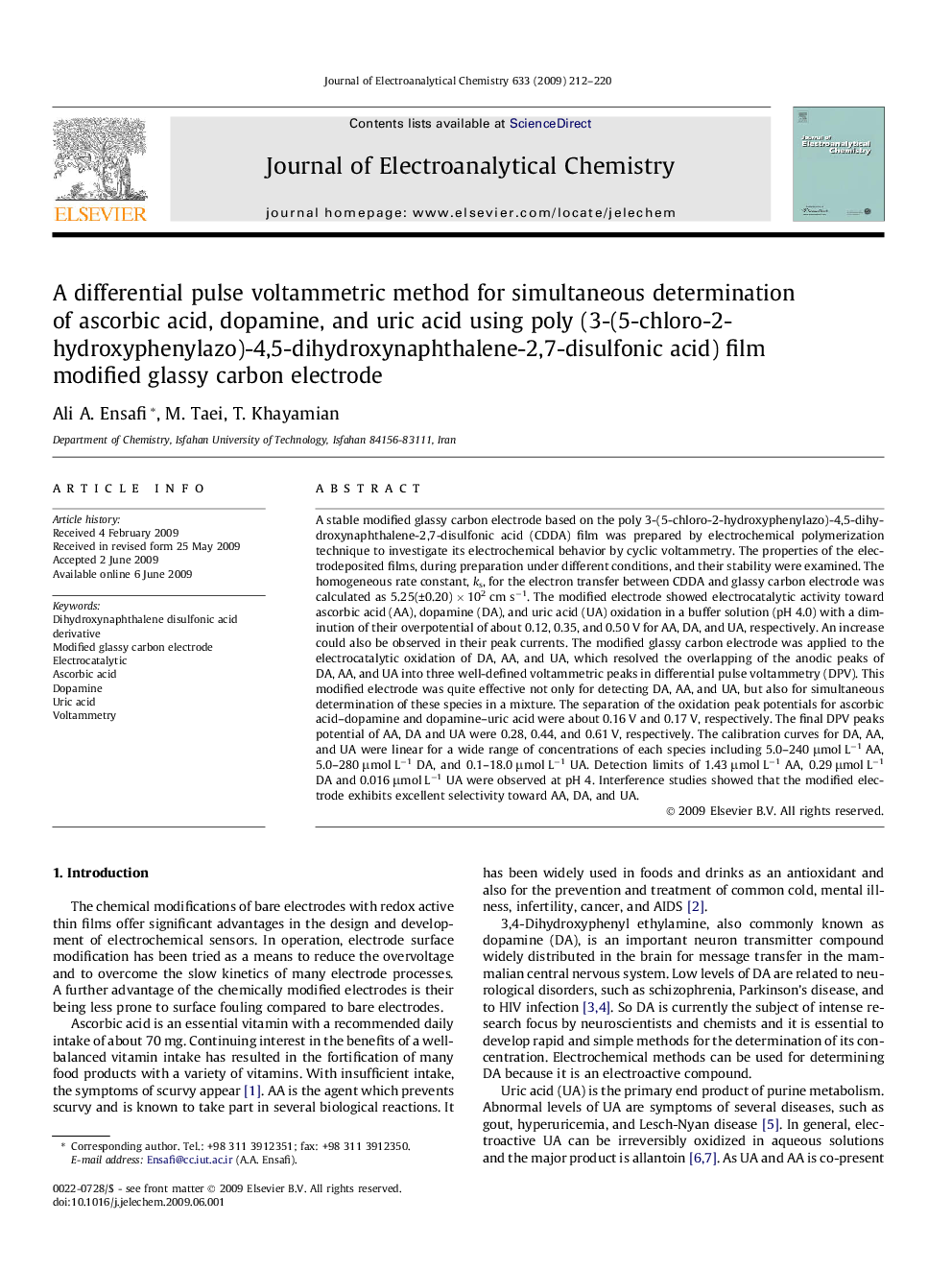| کد مقاله | کد نشریه | سال انتشار | مقاله انگلیسی | نسخه تمام متن |
|---|---|---|---|---|
| 220206 | 463320 | 2009 | 9 صفحه PDF | دانلود رایگان |

A stable modified glassy carbon electrode based on the poly 3-(5-chloro-2-hydroxyphenylazo)-4,5-dihydroxynaphthalene-2,7-disulfonic acid (CDDA) film was prepared by electrochemical polymerization technique to investigate its electrochemical behavior by cyclic voltammetry. The properties of the electrodeposited films, during preparation under different conditions, and their stability were examined. The homogeneous rate constant, ks, for the electron transfer between CDDA and glassy carbon electrode was calculated as 5.25(±0.20) × 102 cm s−1. The modified electrode showed electrocatalytic activity toward ascorbic acid (AA), dopamine (DA), and uric acid (UA) oxidation in a buffer solution (pH 4.0) with a diminution of their overpotential of about 0.12, 0.35, and 0.50 V for AA, DA, and UA, respectively. An increase could also be observed in their peak currents. The modified glassy carbon electrode was applied to the electrocatalytic oxidation of DA, AA, and UA, which resolved the overlapping of the anodic peaks of DA, AA, and UA into three well-defined voltammetric peaks in differential pulse voltammetry (DPV). This modified electrode was quite effective not only for detecting DA, AA, and UA, but also for simultaneous determination of these species in a mixture. The separation of the oxidation peak potentials for ascorbic acid–dopamine and dopamine–uric acid were about 0.16 V and 0.17 V, respectively. The final DPV peaks potential of AA, DA and UA were 0.28, 0.44, and 0.61 V, respectively. The calibration curves for DA, AA, and UA were linear for a wide range of concentrations of each species including 5.0–240 μmol L−1 AA, 5.0–280 μmol L−1 DA, and 0.1–18.0 μmol L−1 UA. Detection limits of 1.43 μmol L−1 AA, 0.29 μmol L−1 DA and 0.016 μmol L−1 UA were observed at pH 4. Interference studies showed that the modified electrode exhibits excellent selectivity toward AA, DA, and UA.
Journal: Journal of Electroanalytical Chemistry - Volume 633, Issue 1, 1 August 2009, Pages 212–220